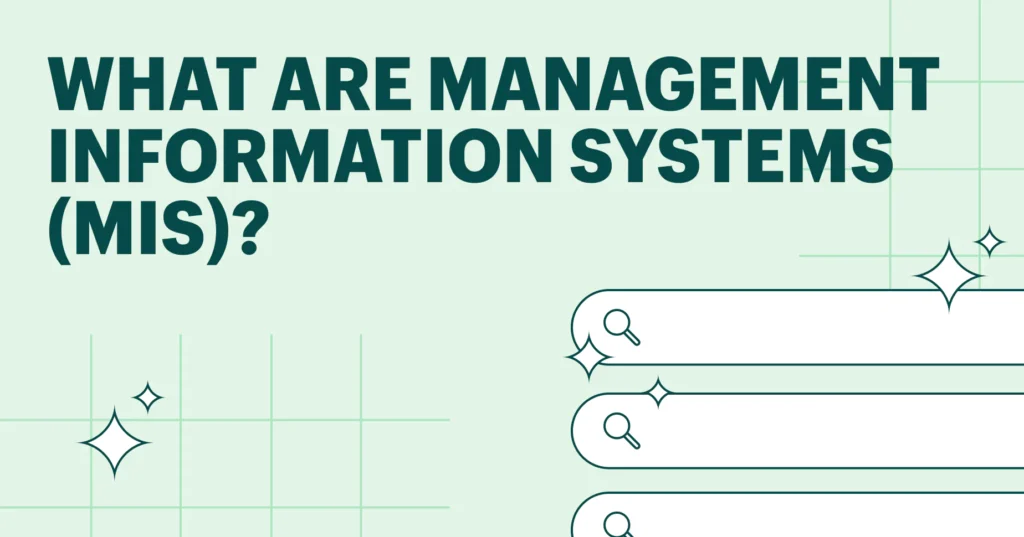In the modern business landscape, where technology plays a pivotal role in organizational operations, Management Information Systems (MIS) have emerged as critical tools for managing, analyzing, and leveraging data. This article provides a comprehensive overview of Management Information Systems, covering their definition, components, benefits, challenges, and implementation.
Definition of Management Information Systems (MIS)
Management Information Systems (MIS) refer to the integrated set of hardware, software, people, procedures, and data that work together to facilitate effective decision-making and support managerial operations within an organization. MIS convert raw data into meaningful information that aids managers in making informed decisions to achieve organizational goals.
Components of MIS
- Hardware: This includes the physical devices such as computers, servers, networking equipment, and peripherals that are used to collect, store, and process data.
- Software: MIS software ranges from database management systems to analytics and reporting tools. These software applications enable data collection, processing, storage, and presentation.
- Data: The raw material for MIS is data, which can be structured (organized in a specific format, like a spreadsheet) or unstructured (not organized, like text documents).
- Procedures: These are the guidelines and processes that define how data is collected, processed, stored, and retrieved. Proper procedures ensure data accuracy, security, and consistency.
- People: MIS is not just about technology; it involves the individuals who interact with the system. Users, managers, IT professionals, and data analysts are all integral to the successful functioning of MIS.
Benefits of MIS
- Informed Decision Making: MIS provides timely and accurate information to managers, enabling them to make well-informed decisions based on real-time data.
- Efficiency: MIS automates processes, reducing manual efforts and errors, leading to increased operational efficiency.
- Strategic Planning: MIS aids in long-term planning by providing historical data, market trends, and other insights that inform strategic decisions.
- Competitive Advantage: Organizations that effectively utilize MIS gain a competitive edge by quickly adapting to changing market conditions and customer needs.
- Improved Communication: MIS facilitates information sharing across departments, enhancing communication and collaboration within the organization.
- Data Analysis: MIS enables data analysis, allowing organizations to identify patterns, trends, and opportunities for growth.
Challenges of MIS
- Data Security: With the increasing reliance on digital data, protecting sensitive information from unauthorized access and cyber threats is a major challenge.
- Integration Complexities: Integrating diverse software and hardware components within MIS can be complex, requiring effective coordination.
- Cost: Establishing and maintaining an MIS infrastructure can be costly, including investments in hardware, software, and skilled personnel.
- User Resistance: Employees might resist using MIS due to a learning curve or fear of change, impacting its successful implementation.
Implementation of MIS
- Assessment: Evaluate the organization’s needs, goals, and existing systems to determine the scope of the MIS.
- System Design: Based on the assessment, design the MIS architecture, including hardware, software, data models, and user interfaces.
- Development: Develop or customize software applications, set up databases, and establish data collection mechanisms.
- Testing: Thoroughly test the MIS for accuracy, functionality, and security.
- Training: Provide training to users and stakeholders to ensure effective utilization of the MIS.
- Deployment: Roll out the MIS gradually, monitoring its performance and addressing any issues that arise.
- Maintenance: Continuously update and maintain the MIS to ensure it remains relevant and efficient.
Conclusion
Management Information Systems have become indispensable tools for modern organizations seeking to enhance decision-making, streamline operations, and gain a competitive advantage. By effectively integrating hardware, software, data, people, and procedures, MIS empowers managers to navigate the complex business landscape with confidence. Despite the challenges, proper implementation and management of MIS can yield substantial benefits and contribute to the overall success of an organization.

